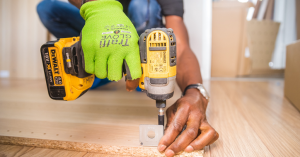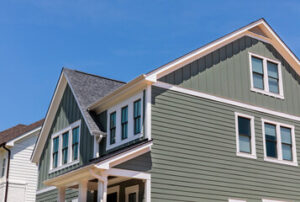Forming an LLC helps legitimize your business and makes clients feel safer letting you into their home or office. A service like ZenBusiness makes this step fast and simple.
A handyman can do a number of plumbing tasks, such as fixing leaky faucets and toilets. However, it is best to hire a licensed plumber for any major plumbing jobs or repairs. Licensed plumbers have the skills and equipment to handle more complex plumbing tasks than a general handyman. Click the Handyman Mesa AZ to learn more.

In addition to plumbing, handymen can also address minor electrical and HVAC repairs. However, most states require a trade-specific license to offer these services. Those seeking to become professional handypersons can often find internships or apprenticeship programmes in these fields, which provide them with the necessary experience and education to begin offering these services legally.
The most important thing that a handyman can do to protect their business is to get insured. This will ensure that they are covered in case of any injuries or accidents that may occur on the job site. Handymen who choose to get insured with Thimble can do so quickly and easily, with on-demand insurance plans that allow them to purchase coverage by the hour or day.
For more information on getting insured as a handyperson, or to learn more about the other home repair tasks that a handyman can do, contact Thimble today. Our team of insurance experts is here to help. You can get a quote, review your options, and purchase insurance in minutes with our easy online process.
Electrical
Handymen have the skills and tools to perform a number of electrical jobs, from replacing outlets and switches to upgrading wiring. However, it’s important to know when a job calls for a licensed electrician. While handymen may have the ability to complete these tasks, a single misstep could result in serious injury or damage to the home. If you’re concerned about the level of experience your handyman has, consider hiring an electrician to ensure safety and quality work.
Rewiring outlets and switches is an example of a task that many homeowners are not comfortable doing themselves. It involves removing old wires and installing new ones, along with changing out the outlet covers and switches. A skilled handyman can handle this job quickly and efficiently.
Another common electrical task is replacing or repairing circuit breakers. A handyman can troubleshoot and determine the cause of a faulty breaker, including checking the amperage draw on appliances and checking fuses. He can then make the necessary repairs or upgrades.
Other electrical services a handyman can provide include installing smart home upgrades, like carbon monoxide and smoke detectors, as well as lighting fixtures. These can be a great way to save energy, and help protect appliances and equipment from electrical surges. A good handyman can also install a charger for an electric vehicle or hybrid car. This can be a convenient and safe way to charge the vehicle on-demand, especially during storms or power outages.
Painting
A paint job is one of the most popular Handyman services requested, and a great way to improve the overall appearance of your home. Professional painters bring specialized skills and expertise that contribute to an outstanding finish, using high-grade materials that deliver long-lasting durability. They are also skilled in advanced painting techniques, allowing them to address difficult surfaces and achieve precise results.
While a handyman can perform minor painting jobs like touch-ups and single walls, it’s important to know when they might not be the best option for your project. If your project is larger in scope and requires extensive preparation, it’s often more cost-efficient and time-efficient to hire a professional painting contractor.
In addition to performing standard painting tasks, handymen can help you choose the right colors and finishes for your space. They can even take care of the details, such as patching and smoothing rough drywall before painting. Additionally, they can apply stain or varnish to your decking to help it last longer and withstand the elements.
Handymen also offer gutter cleaning services to prevent blockages and keep rainwater flowing away from your property. This prevents water damage and other costly repairs. They are also able to help you repair or replace your window frames and sills. In cases where the work required is too complicated or specialized, a handyman will refer you to a licensed professional in that specific area.
Carpentry
A handyman’s carpentry skills allow them to enhance the structural integrity of a building. They’re skilled in repairing or replacing doors and windows, and can also add custom features that align with a client’s design preferences or practical requirements.
Handymen often work with electricians, plumbers and other tradespeople to complete repair tasks at residential or commercial properties. If a job is too big for them to handle, they’ll refer the client to a specialist that has the qualifications and expertise to tackle it.
Handymen typically undergo on-the-job training, shadowing more experienced workers until they can perform tasks independently. Many also take up courses in DIY skills like electrical repairs or plumbing to improve their employment prospects. Some even pursue a formal apprenticeship programme in the construction trades, with the aim of becoming a qualified plumber or electrician. Others opt for temporary jobs with the aim of gaining experience in various specialisms and growing their professional network before applying for permanent positions. These positions are commonly found with service companies, property managers and private employers. They may report to an operations manager or other senior staff member, depending on the size of the employer.
Flooring
Handymen can install a variety of flooring types, including hardwood, laminate, and tile. They can also repair existing floors and restore damaged areas. This service is typically more cost-effective than replacing an entire floor, and it can increase a home’s resale value.
Handypersons can also perform a variety of carpentry services, including shelving and storage unit installation. They can design and build shelves that meet a client’s needs, adding functionality to any space. They can also install trim and molding, enhancing the aesthetic of a room.
Tile is a durable and versatile material that can be used in various locations throughout the home. It can be installed in bathrooms, kitchens, and foyers. However, it can become damaged over time due to normal wear and tear or water damage. Handymen can repair tile surfaces by resealing and grouting. They can also refinish tiles to restore their appearance and durability.
Furniture assembly is a common task that most people don’t want to do themselves. It can be time-consuming and tedious, but a handyman can save the day by quickly assembling any type of furniture for clients.
Drywall repair and maintenance are crucial aspects of a well-functioning home. Handymen can patch holes, reinstall wallpaper, and repair nail pops to create a flawless finished product. They can also assist with light fixture installation to ensure that homes are properly illuminated. This service is often more cost-effective and less stressful than hiring a specialized contractor.
Roofing
Roofing repairs involve a lot of risk and specialized knowledge that most handymen don’t possess. It’s best to have professional roofing contractors handle any work that involves the roof on your home or business.
Having a skilled and experienced roofing contractor perform all the necessary roof repair or installation services is essential to protecting your property from water damage, mold growth, and structural problems. A licensed roofer will know how to inspect your roof for damage and identify any underlying issues that may require additional attention. In addition, a roofing contractor will have the proper licensing and insurance protection to perform roofing work safely and correctly.
A roof is a complex system that has multiple layers that all work together to protect your property. It’s easy for a handyman to cause more harm than good with a quick fix that doesn’t take into account how the entire roofing system functions. For example, a handyman may nail down some shingles and think the problem is solved, but in reality, they could have caused a leak by walking on the wrong parts of your roof or using the incorrect fasteners.




